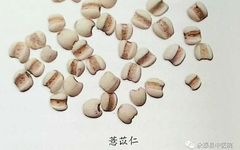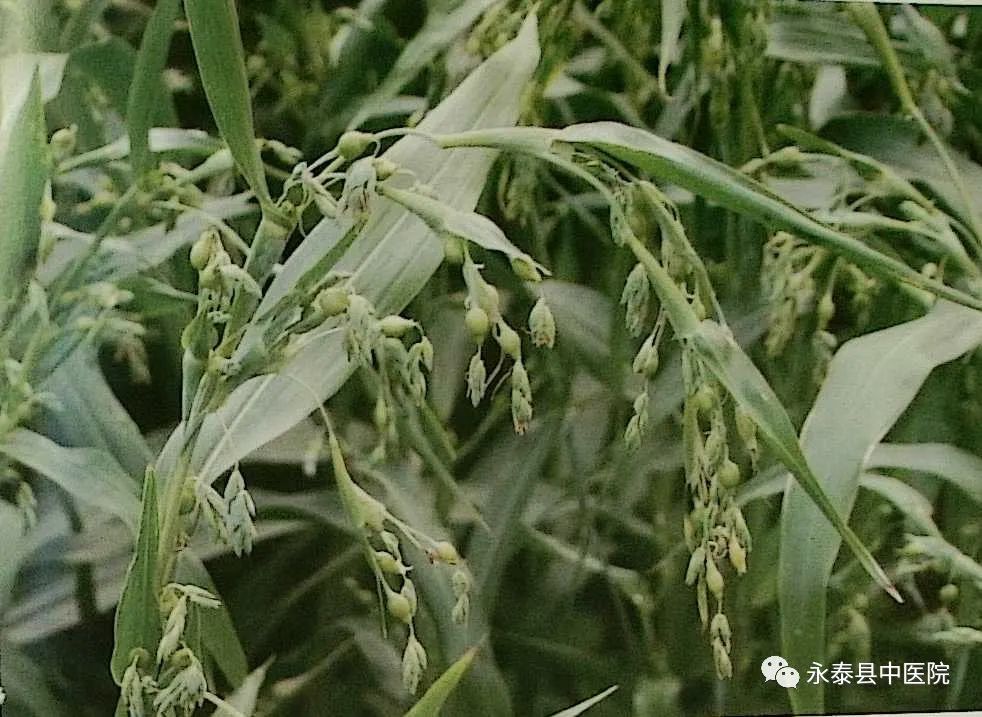
|
Alias:Coix Seed (Yi Yi Ren) Source:Recorded in the “Shen Nong Ben Cao Jing”: “Grown in Zhen Ding (present-day Zhengding, Hebei).” The “Ming Yi Bie Lu” also states: “Coix seeds grow in Zhen Ding, Ping Ze, and fields.” The “Ben Cao Jing Ji Zhu” mentions: “The largest seeds are from Zhen Ding, Ping Ze, and fields, and from Jiaozhi (present-day Hanoi, Vietnam).” The Tang dynasty’s “Xin Xiu Ben Cao” records: “Zhen Ding County belongs to Changshan Commandery (Shijiazhuang, Hebei).” The Song dynasty’s “Zheng Lei Ben Cao” states: “Zhen Ding County belongs to Changshan Commandery, with many growing near roads and in households.” The Qing dynasty’s “Zhi Wu Ming Shi Tu Kao” notes: “Produced abundantly in Jiangxi and Hunan.” The modern “Zhong Yao Da Ci Dian” records: “Coix seeds are produced in most regions of China, mainly in Fujian, Hebei, and Liaoning.” Fujian Coix is primarily produced in Pucheng County, with a cultivation history of over 500 years, recognized as a local specialty in “China’s Local Specialty Products.” Pucheng Coix seeds are characterized by their large, pure grains, fullness, white color, and strong medicinal efficacy. Currently, Coix is widely cultivated in Ninghua, Xianyou, and Xinluo District, with the largest cultivation areas in Pucheng, Xianyou, and Ninghua. Origin:This product is the dried mature seeds of the plant Coix lacryma-jobi, a member of the Poaceae family. Harvesting and Processing:Harvest the plants in autumn when the fruits are mature, dry them, thresh the fruits, dry them again, remove the outer shell, yellow-brown seed coat, and impurities, and collect the seeds.
Characteristics:This product is broad-oval or long-elliptical in shape, measuring 4-8mm in length and 3-6mm in width. The surface is milky white and smooth, occasionally with remnants of yellow-brown seed coat; one end is blunt and rounded, while the other end is wider and slightly concave, with a light brown dot-like hilum; the back is rounded and convex, and the belly has a wide and deep longitudinal groove. The texture is solid, with a white cross-section and powdery consistency. It has a slight aroma and a mildly sweet taste. Properties and Effects:Sweet, bland, and cool. It enters the Spleen, Stomach, and Lung meridians. It promotes diuresis and dampness elimination, strengthens the Spleen and stops diarrhea, alleviates pain, expels pus, detoxifies, and disperses masses. It is used for edema, beriberi, difficult urination, Spleen deficiency diarrhea, damp bi syndrome, lung abscess, intestinal abscess, warts, and cancerous tumors. Dosage:9-30g. Decoction for oral administration. Traditional Applications: 1. “Wen Bing Tiao Bian”: Coix Seed, White Cardamom, Apricot Kernel, Bamboo Leaf, Tong Cao, Talcum, Pinellia, Magnolia Bark. Treats warm diseases with symptoms of headache, chills, body aches, white tongue, no thirst, chest tightness, and lack of appetite, with heat in the body in the afternoon. 2. “He Ji Ju Fang”: Used in combination with Ginseng, Poria, and Atractylodes, such as in Shen Ling Bai Zhu San, which can drain Spleen dampness and strengthen the Spleen to stop diarrhea. 3. “Qian Jin Fang”: Used with Reed Stem, Winter Melon Seed, and Peach Kernel, such as in Wei Jing Tang, which can treat lung abscess with chest pain and cough with purulent sputum. |
Excerpt from: Fujian Institute of Traditional Chinese Medicine “Fujian Local Medicinal Materials”
…………………Previous Issues…………………
[Learning Chinese Medicine] Fujian Local Medicinal Materials – Morinda Root
[Learning Chinese Medicine 02] Fujian Local Medicinal Materials – Hedyotis Diffusa
[Learning Chinese Medicine 03] Fujian Local Medicinal Materials – Atractylodes
[Learning Chinese Medicine 04] Fujian Local Medicinal Materials – Dried Tangerine Peel
[Learning Chinese Medicine 05] Fujian Local Medicinal Materials – Paris Polyphylla
[Learning Chinese Medicine 06] Fujian Local Medicinal Materials – Andrographis
[Learning Chinese Medicine 07] Fujian Local Medicinal Materials – Poria
[Learning Chinese Medicine 08] Fujian Local Medicinal Materials – Finger Citron
[Learning Chinese Medicine 09] Fujian Local Medicinal Materials – Kudzu Root
[Learning Chinese Medicine 10] Fujian Local Medicinal Materials – Dog Spine
[Learning Chinese Medicine 11] Fujian Local Medicinal Materials – Uncaria
[Learning Chinese Medicine 12] Fujian Local Medicinal Materials – Trichosanthes
[Learning Chinese Medicine 13] Fujian Local Medicinal Materials – Sea Jinsha
[Learning Chinese Medicine 14] Fujian Local Medicinal Materials – Seahorse
[Learning Chinese Medicine 15] Fujian Local Medicinal Materials – Sea Cucumber
[Learning Chinese Medicine 16] Fujian Local Medicinal Materials – Magnolia Bark
[Learning Chinese Medicine 17] Fujian Local Medicinal Materials – Seaweed
[Learning Chinese Medicine 18] Fujian Local Medicinal Materials – Polygonum Cuspidatum
[Learning Chinese Medicine 19] Fujian Local Medicinal Materials – Rhizoma Polygonati
[Learning Chinese Medicine 20] Fujian Local Medicinal Materials – Fermented Rice
[Learning Chinese Medicine 21] Fujian Local Medicinal Materials – Turmeric
[Learning Chinese Medicine 22] Fujian Local Medicinal Materials – Gynostemma
[Learning Chinese Medicine 23] Fujian Local Medicinal Materials – Money Flower Snake
[Learning Chinese Medicine 24] Fujian Local Medicinal Materials – Rhizoma Dioscoreae
[Learning Chinese Medicine 25] Fujian Local Medicinal Materials – Thunder God Vine
[Learning Chinese Medicine 26] Fujian Local Medicinal Materials – Lychee Seed
[Learning Chinese Medicine 27] Fujian Local Medicinal Materials – Lotus Seed
[Learning Chinese Medicine 28] Fujian Local Medicinal Materials – Ganoderma
[Learning Chinese Medicine 29] Fujian Local Medicinal Materials – Longan Flesh
[Learning Chinese Medicine 30] Fujian Local Medicinal Materials – Green Citrus
[Learning Chinese Medicine 31] Fujian Local Medicinal Materials – Vitex
[Learning Chinese Medicine 32] Fujian Local Medicinal Materials – Jasmine Flower
[Learning Chinese Medicine 33] Fujian Local Medicinal Materials – Oyster
[Learning Chinese Medicine 34] Fujian Local Medicinal Materials – Isatis Root
[Learning Chinese Medicine 35] Fujian Local Medicinal Materials – Loquat Leaf
[Learning Chinese Medicine 36] Fujian Local Medicinal Materials – Qijiang Snake
[Learning Chinese Medicine 37] Fujian Local Medicinal Materials – Indigo
[Learning Chinese Medicine 38] Fujian Local Medicinal Materials – Green Fruit
[Learning Chinese Medicine 39] Fujian Local Medicinal Materials – Green Peel
[Learning Chinese Medicine 40] Fujian Local Medicinal Materials – Amomum
[Learning Chinese Medicine 41] Fujian Local Medicinal Materials – Ophiopogon
[Learning Chinese Medicine 42] Fujian Local Medicinal Materials – Chinese Yam
[Learning Chinese Medicine 43] Fujian Local Medicinal Materials – Stone Decision Bright
[Learning Chinese Medicine 44] Fujian Local Medicinal Materials – Quisqualis
[Learning Chinese Medicine 45] Fujian Local Medicinal Materials – Codonopsis
[Learning Chinese Medicine 46] Fujian Local Medicinal Materials – Dendrobium
[Learning Chinese Medicine 47] Fujian Local Medicinal Materials – Tenebrio
[Learning Chinese Medicine 48] Fujian Local Medicinal Materials – Black Plum
[Learning Chinese Medicine 49] Fujian Local Medicinal Materials – Citron




